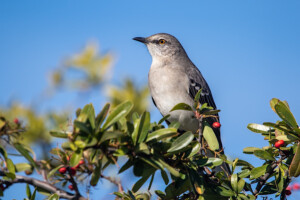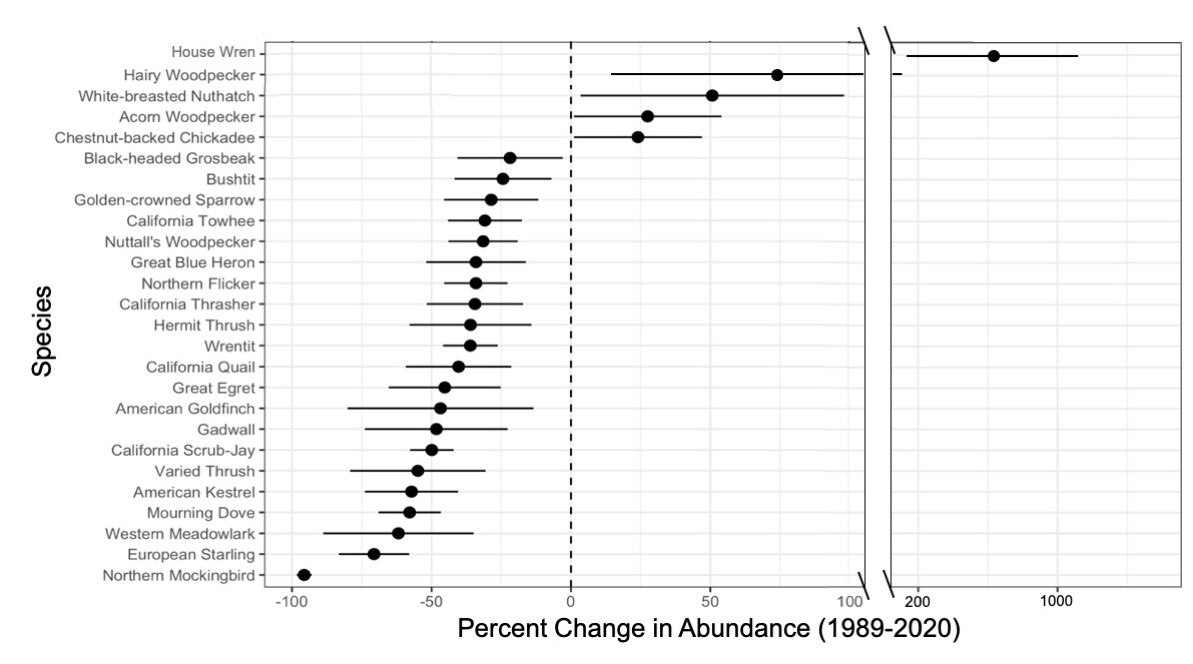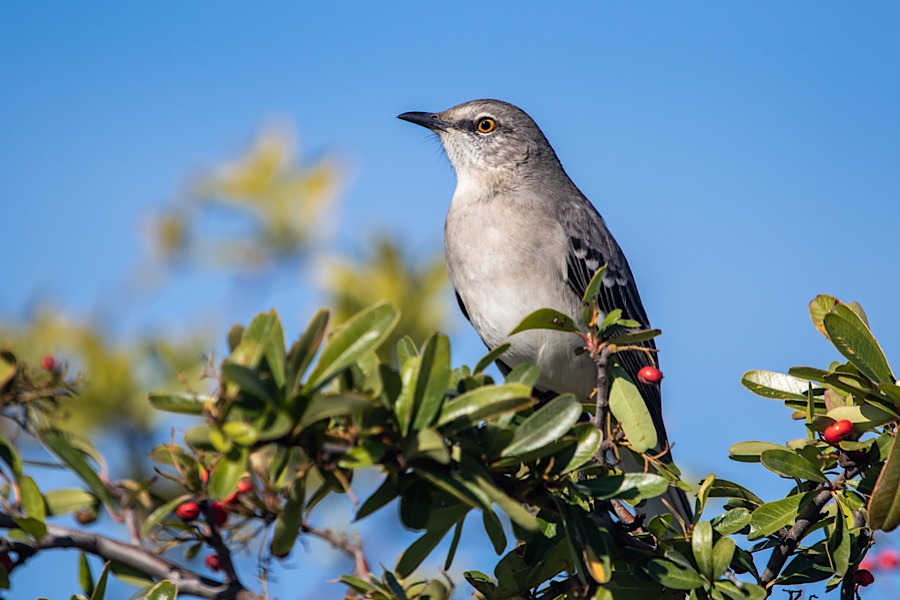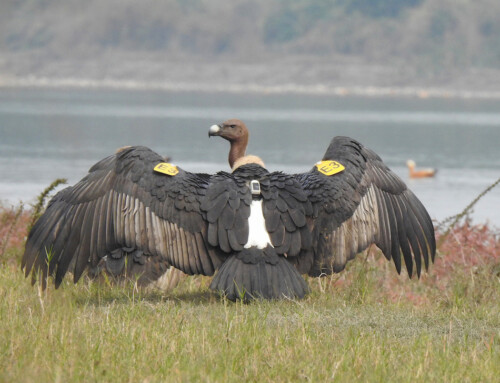LINKED PAPER  Mixed population trends inside a California protected area: Evidence from long-term community science monitoring. Wright-Ueda, J.M., Dirzo, R., McFadden, T.N. 2023. IBIS. DOI: 10.1111/ibi.13280. VIEW
Mixed population trends inside a California protected area: Evidence from long-term community science monitoring. Wright-Ueda, J.M., Dirzo, R., McFadden, T.N. 2023. IBIS. DOI: 10.1111/ibi.13280. VIEW
From climate change to urban expansion, human threats to biodiversity do not affect all species equally. Instead, avian responses to human impacts vary substantially by species, life history traits, and environmental context. Understanding this diversity of avian responses and the efficacy of our conservation actions is a critical challenge.
Protected areas have helped countless bird species (Gray et al. 2016; Dettling et al. 2021), but many threats to birds transcend protected area boundaries. For example, in the United States, two-thirds of bird species will be vulnerable to climate change under a 3.0-degree warming climate scenario (Bateman et al. 2020), and free-ranging cats kill 1.3 to 4.0 billion birds annually (Loss et al. 2013). Further, many species face threats during migration when they are not using a protected area (Humple et al. 2020).
Here, we analyzed 31 years of monthly bird survey data collected by volunteers at Stanford University’s Jasper Ridge Biological Preserve in Central Coastal California. We determined local population trends and compared our results to those of the nationwide North American Breeding Bird Survey to assess the efficacy of small protected areas at sustaining bird diversity and abundance.

Figure 1. Geographical location and context for the study area and its region of comparison. A) Stanford University’s 483-hectare Jasper Ridge Biological Preserve outlined in white, and the six surveyed sectors of the preserve numbered and patterned. B) Inset of the San Francisco Bay Area with the area in Figure 1A outlined in white. C) Bird Conservation Region 32 (Bird Studies Canada and NABCI 2014) covers the California Central Coast and is filled with dashed lines. The average annual trends from Breeding Bird Survey transects throughout this region were compared to the preserve’s trends. The San Francisco Bay Area shown in 1B is outlined in black.
From 1989 to 2020, volunteer observers conducted monthly transects within six sectors of the preserve (Figure 1). Over 31 years of surveys, 192 observers conducted 2,055 transects and recorded a total of 473,401 observations of 184 species, and 66 species had enough data for analysis. To determine each species’ trend in abundance (i.e., the number of individuals detected per survey), we created Bayesian Generalized Linear Mixed Models that accounted for the sector of the preserve, observer, and seasonality. We then compared each species’ trend in the protected area to its trend across the California Central Coast from the North American Breeding Bird Survey dataset.

Figure 2. Significant species trends within the protected area as percent population changes over 31 years. The data point for each species is the mean value of the population trend magnitude and the line represents the 95% credible interval.
Many species experienced dramatic population losses within the protected area over 31 years. Twenty-one of the 66 modeled species declined within the preserve, while only five increased. One species, the Northern Mockingbird (see cover photo), was even extirpated from the protected area during the study. Further, the number of declining species is likely a conservative estimate due to the challenge of modeling some species’ population trends, like previously declining, rare, or migratory species.
Fire suppression within the protected area may have driven some of its avian population trends. While the protected area’s median fire frequency prior to European settlement was every ten years (Stephens & Fry 2007), the protected area has not experienced a major burn in over a hundred years. The lack of major fire events within the preserve has likely contributed to the extremely dense shrub stands we see today. We hypothesize that this overgrowth may have produced unsuitable habitat for scrub species, which not only declined within the protected area but also declined faster within the protected area than across the surrounding region. Additionally, the lack of fire and protection of standing dead trees within the preserve may have helped some cavity nesting species, since all five increasing species were cavity nesters.

Figure 3. Twenty-one species had significantly different annual trends in the protected area (JRBP) and the California Central Coast (BBS). The data point for each species is the average value while the line represents the 95% CrI. A) Average annual percent changes in abundance between 1989 and 2020 are in green for the protected area and are in a darker violet for the California Central Coast. B) Each point represents the difference between the regional trend and the trend within the protected area for each species.
When compared to trends found across the California Central Coast region, 13 of the 55 studied species fared worse inside of the preserve while eight fared better. We suspect that the preserve’s abundant oak woodland helped some tits, like the Chestnut-backed Chickadee and the Oak Titmouse, fare better within the preserve. However, some species that experienced faster declines within the preserve, like the California Quail or the Northern Mockingbird, face unknown threats that require further study.
Most species experienced similar trends within and outside of the preserve, so they were likely experiencing similar drivers within the protected area and across their entire range. For example, the migratory American Kestrel faces a complex mixture of threats from pesticides to increased predation by Cooper’s Hawks (McClure et al. 2017). To ensure protected areas conserve entire avian communities, we must research and target the threats facing locally declining species; create, expand, and connect protected areas; and explicitly consider how existing protected areas target and manage each species.
References
Bateman, B.L., Wilsey, C., Taylor, L., Wu, J., LeBaron, G.S. and Langham, G. 2020. North American birds require mitigation and adaptation to reduce vulnerability to climate change. Conservation Science and Practice 2:8. VIEW
Dettling, M.D., Dybala, K.E., Humple, D.L. and Gardali, T. 2021. Protected areas safeguard landbird populations in central coastal California: Evidence from long-term population trends. The Condor 123:4. VIEW
Gray, C.L., Hill, S.L., Newbold, T., Hudson, L.N., Börger, L., Contu, S., Hoskins, A.J., Ferrier, S., Purvis, A. and Scharlemann, J.P. 2016. Local biodiversity is higher inside than outside terrestrial protected areas worldwide. Nature Communications 7:1. VIEW
Humple, D.L., Cormier, R.L., Richardson, T.W., Burnett, R.D., Seavy, N.E., Dybala, K.E. and Gardali, T. 2020. Migration tracking reveals geographic variation in the vulnerability of a Nearctic-Neotropical migrant bird. Scientific Reports 10:1. VIEW
Loss, S.R., Will, T. and Marra, P.P. 2013. The impact of free-ranging domestic cats on wildlife of the United States. Nature Communications 4:1. VIEW
McClure, C.J., Schulwitz, S.E., Van Buskirk, R., Pauli, B.P. and Heath, J.A. 2017. Commentary: Research recommendations for understanding the decline of American Kestrels (Falco sparverius) across much of North America. Journal of Raptor Research 51:4. VIEW
Stephens, S.L., Fry, D.L. 2007. Fire History in Coast Redwood Stands in San Mateo County Parks and Jasper Ridge, Santa Cruz Mountains. Pacific Southwest Research Station: USDA Forest Service. VIEW
Image credit
Top right: Northern Mockingbird Mimus polygottos © Julien Wright-Ueda.




